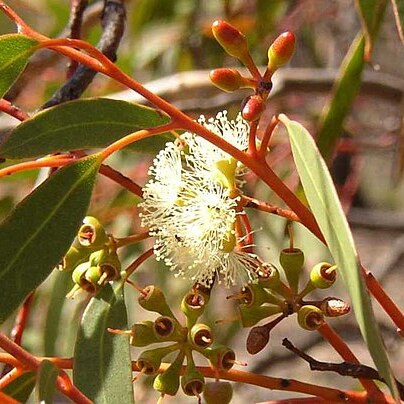A medium to tall tree. It grows 5-12 m high. It spreads 4-8 m wide. The bark is rough lower down and smooth higher up. It has many stems. The bark is usually grey and smooth but can be rough on the trunk. The leaves are narrow and glossy. They are blue-green. The flowers are pale yellow-green. The fruit are smooth and round with a narrow rim. The valves have needle like points.


